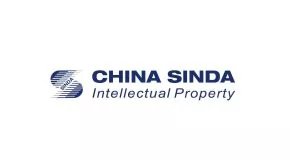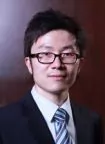STUDY QUESTIONS (PATENTS)
Added Matter: the Standard for Determining Adequate Support for Amendments
Current Law and Practice
Article 33 of the Chinese Patent Law (CPL), represents the governing principle for determining adequate support for amendments, stipulating that:
"An Applicant may amend his or its application documents for a patent, but the amendment to the application for a patent for invention or utility model shall not go beyond the scope of the disclosure recorded in the initial description and claims, and the amendment to the application for a patent for design may not go beyond the scope of the disclosure as shown in the initial drawings or photographs."
Using Article 33 of the CPL as the basis and principle, the State of Intellectual Property Office of China (SIPO) allows the Applicant to properly amend the application documents during the prosecution of the application and meanwhile, prohibits the introduction of any new matters that may affect the filing date of the application.
Similar to the European Patent Office, in order to protect public interest, the SIPO requires the Examiner to strictly abide by the provisions of Article 33 when examining the amended documents submitted by the Applicant.
1. Are amendments to the claims, description and/or figures of a patent possible?
In patent applications, amendments to the claims, description and/or figures are allowed.
In granted patents, amendments to the description and/or figures are not allowed. In case of a misprint in editing/formatting and publishing, only the SIPO may correct the misprint. Similarly, amendments to the claims are generally not allowed either, unless the patent is involved in an invalidation proceeding.
2. What is the standard for determining whether such amendments are permissible?
As mentioned above, the overall principle is represented by Article 33 of the CPL. In practice, the most critical and difficult part is to determine "the scope of the disclosure recorded in the initial description and claims".
According to the Chinese Guidelines for Patent Examination (CGPE):
"The scope of disclosure recorded in the initial description and claims includes the contents literally described in the initial description and claims, and the contents determined directly and unambiguously according to the contents literally described in the initial description and claims, and the drawings of the description." (Part II, Chapter 8, Section 5.2.1.1 of the CGPE) emphasis added)
Although the CGPE provide further detailed explanations and examples, different Examiners may still arrive at different conclusions about the same amendment, because the characteristics of the notional subject used to determine whether an added matter can or cannot be determined directly and unambiguously according to the contents literally described in the initial description and claims, and the drawings of the description, are not yet explicitly defined.
In practice, the knowledge and capability of one skilled in the art at the time of filing cannot be accurately defined. Although it is generally accepted that common knowledge or conventional technical means in the art, well-known facts, natural laws, and daily experiences and rules should be taken into consideration when it is needed to decide if an added matter is within the scope of the patent application, the Examiner's subjectivity can hardly be avoided.
In order to strictly abide by Article 33, most Examiners tend to restrict the scope of disclosure recorded in the initial description and claims to the contents literally described in the initial description and claims without considering the comprehension of the disclosure by a person skilled in the art. And the content "determined directly and unambiguously" tends to be interpreted as the one and only content that can be determined (not one that can be reasonably derived).
3. How does the standard change and during which time periods?
The standard does not change. However, in addition to the above substantive standard stipulated in Article 33 of the CPL, there are further restrictions about the timing and manner for amending the application documents in different stages in the prosecution of the patent application and after grant of the patent.
4. How is impermissible added matter defined?
Briefly, "impermissible added matter" can be understood as the contents which are neither literally described in the initial description or claims, nor can be determined directly and unambiguously according to the contents literally described in the initial description and claims, and the drawings of the description.
5. If an amendment that was made to a patent application prior to grant is later reviewed by the SIPO or a court in a post-grant proceeding and determined to contain impermissible added matter, is there a mechanism for the patentee to remedy the defect, for example by removing portions of the amendment found to be impermissible?
No. Basically, there is no mechanism for the Patentee to remedy the defect.
The CPL allows amendments post grant, but adopts a stricter standard than in the examination process.
In the CGPE, strict confinements are provided concerning the timing (only in an invalidation proceeding), the scope (only the claims), the principle (the title of the subject matter of a claim cannot be changed; the extent of protection cannot be extended as compared with that in the granted patent; the amendment shall not go beyond the scope of disclosure recorded in the initial description and claims; and the addition of technical features not included in the claims as granted is generally not allowed) and the manner (deletion of a claim, combination of claims, and deletion of a technical solution) of amendment after grant.
If the "impermissible added matter" constitutes a complete technical solution or a claim, the defect may be removed by deleting the "impermissible added matter" itself.
If the "impermissible added matter" only constitutes part of a claim, the defect may be removed by deleting the entire claim, but not by simply deleting the "impermissible added matter" itself.
Summary
In Chinese current patent law, the Applicant is allowed to amend the claims, the description and the drawings with the proviso that the amendment shall not go beyond the scope of the disclosure recorded in the initial description and claims, which scope comprises both the contents literally described in the initial description and claims, and the contents determined directly and unambiguously according to the contents literally described in the initial description and claims in combination with the drawings of the description. After grant, only in an invalidation case can the Patentee amend the claims in a few possible manners with the same proviso. In this context, any matter that does not fall within the scope of the contents mentioned above belongs to impermissible added matters.
The content of this article is intended to provide a general guide to the subject matter. Specialist advice should be sought about your specific circumstances.



